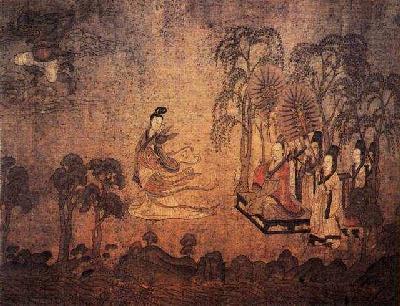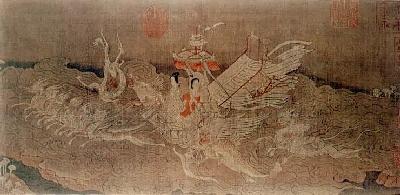| Art Q&A > Painting |
|
|
Luoshen Appraisal Painting
The theme of the Luoshen Appraisal Painting was drawn from the article Luoshen Appraisal, written by the famous writer of the Three Kingdoms (220-280) Cao Zhi, who was forced to part with his lover. The appraisal depicts Cao's encounter with the beautiful Goddess Luoshen at Luoshui River. Cao expressed his nostalgia in the romantic story, and his feelings and the elegant image of Luoshen reappeared in the painting. The Luoshen Appraisal Painting seamlessly combines poetry and painting, demonstrating the high artistic level of the time. With 61 figures in all, the painting was divided into several sections. Gu emphasized the subjects' expressions; the stones, mountains and trees were added for ornamental purposes. Gu used the typical silk-thread line to draw the frames of the figures, which had a bright hue.
|
||||||
All rights reserved. Reproduction of text for non-commercial purposes is permitted provided that both the source and author are acknowledged and a notifying email is sent to us. |
||||||
 |

